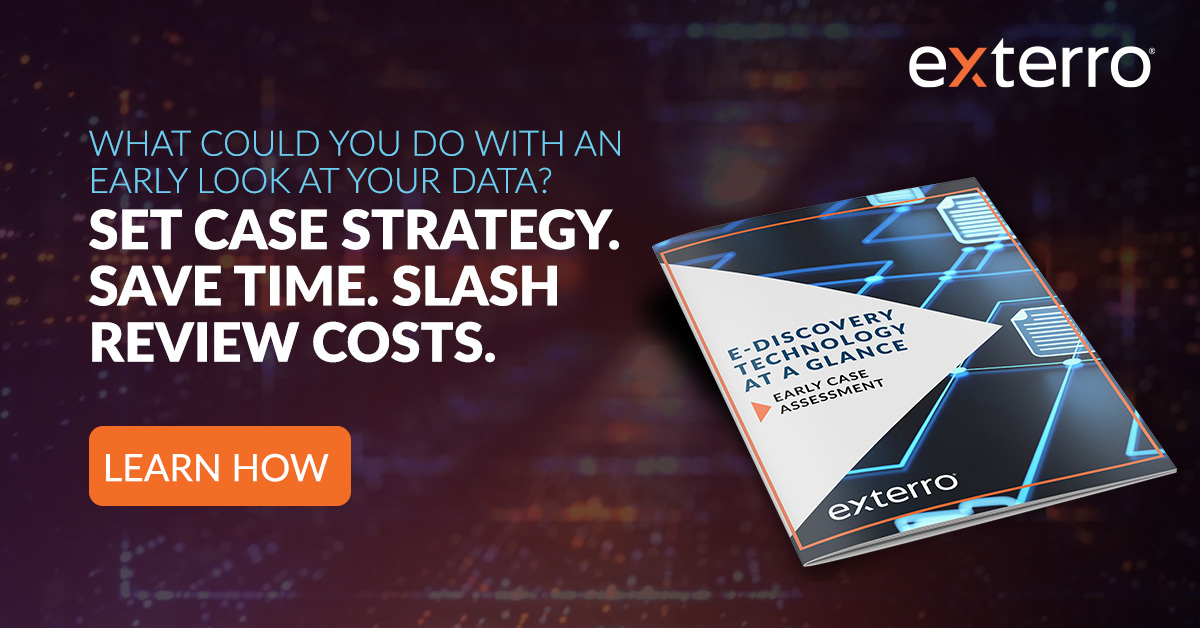E-Discovery
Understand Your ESI before Collecting It with Early Case Assessment
November 6, 2023
What Is Early Case Assessment?
Early case assessment (ECA) is a process in which legal teams dig into the electronically stored information (ESI) during the discovery process (or in an investigation) to understand the facts of the matter before collecting the data. It confers many benefits to legal teams, allowing them to define their case strategy, estimate budgets, and set timelines, ultimately producing downstream cost and time savings during collection, review, and production.
How Does ECA Technology Help?
Using a broad set of analytic and predictive intelligence capabilities, ECA technology rapidly identifies the most important documents prior to collecting a single document, justifying proportional and narrowly tailored e-discovery production parameters. Bob Haskin, Managing Director at Morae Global, explains the power of true early case assessment, “It shifts from traditionally reactive approaches to a more proactive one with the goal of learning what you need to know sooner in the process.”
Using more advanced technology, such as artificial intelligence, during ECA, can provide e-discovery professionals with even more insight, revealing hidden concept clusters, communication patterns, and custodian relationships. Contextual Insights, an AI-powered early case assessment technology embedded in Exterro E-Discovery Data Management, can unlock even greater savings than traditional ECA technologies, speeding up organizations' ability to get to the facts and define case strategy.
What Are Some Alternatives to ECA?
There are two primary alternatives to dedicated early case assessment technology: traditional e-discovery workflows and ECA capabilities that are baked into other software applications.
The biggest competitor to early case assessment isn’t another technology; it’s entrenched ideas about e-discovery workflows. When the EDRM was developed, technology simply didn’t allow deep insight into ESI prior to collection. Attorneys could negotiate e-discovery protocols using boilerplate arguments, because they could safely assume their counterparts would be in the same situation. Exterro Contextual Insights upends that paradigm.
On the technology front, many data repositories provide some level of analytic insight into their contents. These native capabilities also compete with third-party ECA technologies. Haskin explains, “More and more technology providers are working to embed native ECA functionality directly within applications, as opposed to companies needing to use third-party tools. If many of your e-discovery data sources offer ECA functionality, the return on investment from a third-party in-place ECA tool might be limited.”
What do you think? Want to learn more about ECA, including tips for implementing it, pros, cons, and what an Exterro client thinks? If so, download our whitepaper E-Discovery Technology at a Glance: Early Case Assessment, today.
